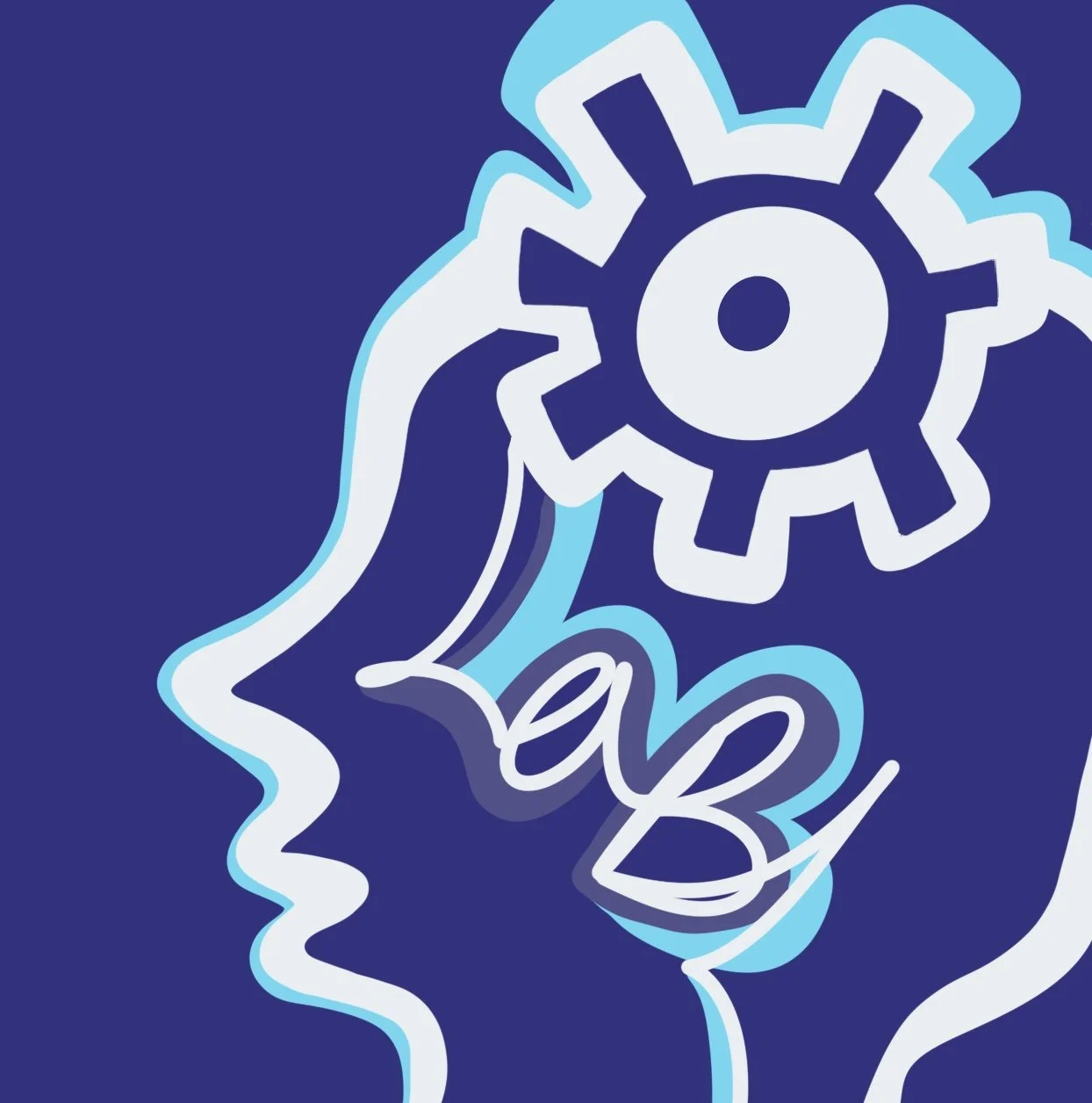Research Projects
At the Language Biomarker Lab (LaBL), we explore how machine learning and language analysis can uncover insights into human cognition and mental health.
Our research focuses on how Natural Language Processing (NLP) and Artificial Intelligence (AI) can, in essence, data mine the mind—revealing patterns in language that reflect thought, behavior, and neurological health.
We currently use advanced deep learning models—such as LLaMA 4, FLAN-UL2, and the latest versions of GPT—to investigate decision-making, the interplay between semantics and syntax, and the early markers of brain-related illnesses like Alzheimer’s disease.
Our work is supported by the National Institutes of Health, including the NIMH and NIA.
Linguistic Biomarkers and AI: Uncovering the Language of Mental Health
Dr. Phillip Wolff leads research at the forefront of using machine learning and natural language processing to identify linguistic markers of mental illness. His work includes developing algorithms to measure semantic density, analyze latent content, and decode time-related language. These methods have been applied to diverse contexts—from Reddit posts to transformer models like T5—to reveal how subtle patterns in language reflect cognitive and emotional states. Through this research, Dr. Wolff is helping to redefine how we detect and understand mental health conditions through the lens of language.
Rezaii, N., Wolff, P., & Price, B. (2023). Natural Language Processing in Psychiatry: The Promises and Perils of a Transformative Approach. British Journal of Psychiatry, 220, 251-253.
Rezaii, N., Walker, E. & Wolff, P. A machine learning approach to predicting psychosis using semantic density and latent content analysis. npj Schizophr 5, 9 (2019) doi:10.1038/s41537-019-0077-9
Thorstad, R. & Wolff, P. Predicting future mental illness from social media: A big-data approach. Behav Res (2019) 51: 1586.
Thorstad, R. & Wolff, P. Big data analysis of the relationship between future thinking and decision making. Proceedings of the National Academy of Sciences Feb 2018, 115 (8) E1740-E1748; DOI: 10.1073/pnas.1706589115
Causal Cognition: From Language to Perception
LaBL’s research on causal cognition spans three core areas: how causal meaning is encoded in language, how causation is perceived from sensory experience, and how people reason about causal relationships. Over the past decade, he has advanced the idea that causal understanding is grounded in force dynamics—reflected both in linguistic semantics and neural processes. Using methods such as computational modeling, computer visualization, haptic rendering, and corpus analysis, his work reveals the deep interconnection between language, perception, and reasoning. This body of research remains among his most widely cited contributions.
Wolff, P. Direct causation in the linguistic coding and individuation of causal events. Cognition volume 88, issue 1, P1-48 (2003) DOI: 10.1016/s0010-0277(03)00004-0
Wolff, P., & Song, G. Models of causation and the semantics of causal verbs. Cognitive Psychology volume 47, issue 3, P276-332 (2003) DOI: 10.1016/s0010-0285(03)00036-7
Wolff, P. Representing causation. Journal of Experimental Psychology: General volume 136, issue 1, P82-111 (2007) DOI: 10.1037/0096-3445.136.1.82
Wolff, P., & Barbey, A. K. Causal reasoning with forces. Frontiers in Human Neuroscience (2015) DOI: 10.3389/fnhum.2015.00001
Language and Thought: Tracing the Cognitive Impact of Words
LaBL’s early work on linguistic biomarkers stems from a broader investigation into the relationship between language and thought. A central focus of this research has been how word meanings reveal the structure of conceptual representations. Co-editing a foundational volume with Dr. Barbara Malt on the language-thought interface, Dr. Wolff explored whether the language we speak shapes how we think—a question he addressed through cross-linguistic studies on the encoding of causation. His research demonstrates how subtle linguistic differences across languages like English, Korean, Chinese, and Russian can influence cognitive processes, including event perception and categorical thinking.
Wolff, P., Jeon, G., & Yu, L. Causers in English, Korean, and Chinese and the individuation of events. Language and Cognition volume 1, issue 2, P167-196 2009 DOI: 10.1515/langcog.2009.009
Wolff, P., & Holmes, K. (2011). Linguistic Relativity. Wiley Interdisciplinary Reviews: Cognitive Science volume 2, issue 3, P253-265 (2010) DOI: 10.1002/wcs.104
Holmes, K. J., & Wolff, P. Does categorical perception in the left hemisphere depend on language? Journal of Experimental Psychology: General volume 141, issue 3, P439-443 (2012) DOI: 10.1037/a0027289
Wolff, P., & Ventura, T. (2009). When Russians learn English: How the semantics of causation may change. Bilingualism: Language and Cognition volume 12, issue 2, P153-176 (2009) DOI: 10.1017/s1366728909004040
Metaphor and Analogy
Metaphor and Analogy
Dr. Wolff’s early research explored how people comprehend metaphorical language, revealing that metaphor understanding unfolds in at least two distinct stages. First, individuals identify a shared relational structure between the metaphor’s base and target (comparison stage), followed by an inference stage where unique properties of the base are mapped onto the target. This two-stage model of metaphor processing has contributed to a deeper understanding of conceptual mapping in language. Dr. Wolff served as the primary investigator in several foundational studies that shaped this framework.
Project Support: Infrastructure & IP-Ready Equipment
-

Microway High-Performance Compute Server
A powerhouse for large-scale AI research, featuring dual CPUs, 80 logical cores, 512GB of RAM, and 20TB of local storage. With four NVIDIA A100 GPUs (80GB each) connected via InfiniBand, it delivers over 1 petaflop of deep learning performance—ideal for training and running state-of-the-art language models.
-

NVIDIA A100 GPUs (x4)
Each 80GB A100 GPU is optimized for AI workloads, enabling high-throughput model training, fine-tuning, and real-time inference in large language model development.
-

Force Dimension Omega.3 Haptic Device
A high-precision force-feedback system used for research in perception and sensorimotor interaction. Its fine control enables detailed studies of physical engagement and cognitive responses to force-based stimuli.
-

Novint Falcon Controllers (x4)
These compact haptic devices provide tactile feedback for experimental tasks involving motor control, decision-making, and user interaction—ideal for bridging AI and human behavior research.
The Language Biomarker Lab (LaBL) combines cutting-edge technology with cognitive science to explore how language reflects and shapes the mind. Equipped with a high-performance Microway compute server and four NVIDIA A100 GPUs, the lab supports large-scale AI research, including the training and deployment of advanced natural language models. This computational power enables the analysis of vast language datasets to uncover biomarkers of mental health. Complementing this are high-resolution haptic devices—such as the Force Dimension Omega.3 and Novint Falcon controllers—which allow researchers to study perception, cognition, and motor interaction through precise force-feedback. Together, these tools enable LaBL to push the boundaries of language, AI, and brain research.






